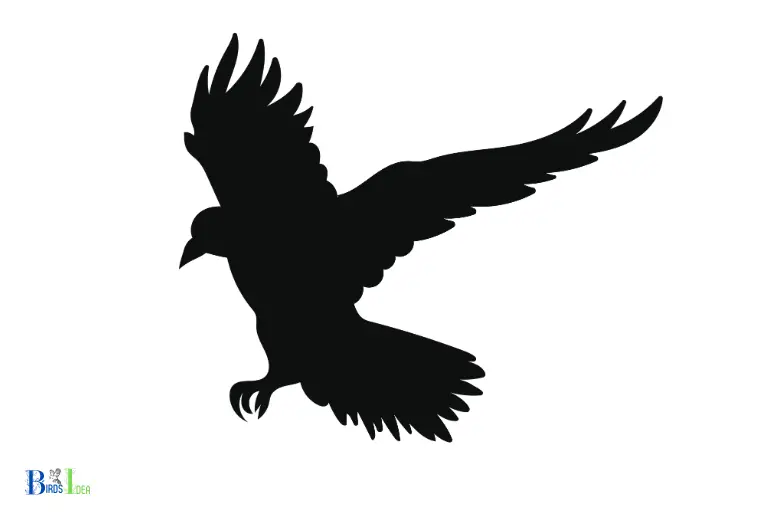What Colors Do Crows See: Ultraviolet Wavelengths!
Crows can see a wide range of colors, including some ultraviolet wavelengths.
Crows belong to the Corvidae family of birds, known for their intelligence and keen vision.
Similar to many other bird species, crows have been found to have the capability to see UV light.
This means that the world they observe is considerably more colorful than what we, humans, can perceive.
This ability helps them locate food, identify predators, and even communicate.
Crows’ advanced color vision is an adaptation that enables them to thrive in various environments.
With the ability to see a broader range of colors and ultraviolet wavelengths, these intelligent birds can effectively locate food, avoid predators, and communicate with other members of their species.
This sophisticated visual system sets them apart from other animals and contributes to their remarkable adaptability and success in diverse habitats.
7 Colors Spectrum for Crows See
| Color Spectrum | Crows’ Vision | Human Comparison |
|---|---|---|
| Ultraviolet | Yes | No |
| Violet | Yes | Yes |
| Blue | Yes | Yes |
| Green | Yes | Yes |
| Yellow | Yes | Yes |
| Orange | Yes | Yes |
| Red | Yes | Yes |
Key Takeaway

Five Facts About: Crows See
What Colors Do Crows See In Nature?
Crows, like many other bird species, have a broader range of color perception than humans. They possess the ability to see colors in the ultraviolet (UV) spectrum, which is beyond human vision.
This unique ability enables them to detect a wider range of colors, especially in their natural environment.
This enhanced vision helps crows in identifying food sources, recognizing potential predators, and even finding suitable nesting sites.
How Does The Sight Of A Crow Differ From Humans?
Crows’ visual perception differs from humans in several ways, mainly due to the structure of their eyes and the distribution of photoreceptor cells.
Crows have a higher number of photoreceptor cells than humans, allowing them to see a broader spectrum of colors and detect minute details in objects.
Additionally, their eye structure enables them to perceive ultraviolet (UV) light, which is invisible to human eyes.
This ability aids them in detecting food, predators, and other crows, among other advantages.
- More photoreceptor cells than humans
- Broader spectrum of color vision
- Ability to see ultraviolet light
- Enhanced perception of details
- Aids in detecting food, predators, and other crows
What Spectrums Of Colors Do Crows See In The Visible Light Spectrum?
Crows have a unique sense of vision that enables them to see a wide range of colors in the visible light spectrum.
They possess tetrachromatic vision, which means they have four types of photoreceptors, or cones, in their eyes.
This gives them the ability to perceive a broader range of colors than humans, who have trichromatic vision. Crows can also see ultraviolet (UV) light, which is beyond the scope of human vision.
This enhanced color perception allows them to communicate effectively, recognize other crows, and find food sources with ease.
- Tetrachromatic vision: Crows have four types of cones in their eyes
- Visible light spectrum: Crows can see a wider range of colors than humans
- Ultraviolet light detection: Crows can see UV light, which is invisible to humans
Crows are known for their intelligence and problem-solving skills, and their advanced color perception is believed to be one of the factors that contribute to their cognitive abilities.
What is a crow’s vision like?
Crows have excellent vision and can see a wide range of colors. They have one of the best visual acuity of any bird, which allows them to distinguish fine details from afar.
Unlike humans, who have three types of color-sensing cells in their eyes, crows have four, which enables them to see ultraviolet light. T
his means that they are able to see many colors that are invisible to humans, such as ultraviolet blues and violets.
Additionally, crows can perceive the differences between similar hues, such as red and orange or green and blue, which makes their visual world even more colorful.
• Crows have excellent vision and can see a wide range of colors.
• Crows have four types of color-sensing cells in their eyes, which allows them to see ultraviolet light.
• They can see many colors that are invisible to humans, such as ultraviolet blues and violets.
• Crows can perceive the differences between similar hues, making their visual world even more colorful.
Can crows see in dark?
Can crows see in the dark? Yes, crows have a higher density of rods in their eyes than humans do, which allows them to see better in low light conditions.
However, this does not mean that they can see in complete darkness. Like humans, crows need at least a small amount of light to see.
Additionally, crows have a wider field of vision than humans which helps them to spot potential predators or prey in their surrounding areas.
In terms of color vision, crows have been found to have better color vision than previously thought. While humans have three types of color receptors in their eyes, crows have four, allowing them to see a wider spectrum of colors.
This means they can distinguish colors that might appear identical to humans.
• Crows have a higher density of rods in their eyes than humans.
• Crows can see in low light conditions, but still need some light to see.
• Crows have a wider field of vision than humans which helps them to spot potential predators or prey.
• Crows have four types of color receptors in their eyes, which allows them to see a wider spectrum of colors.
• Crows can distinguish colors that may appear identical to humans.
Can crows see black and white?
Crows have one of the most advanced color vision systems among birds. They perceive color differently than humans, as they have four types of cone cells in their eyes compared to the three types found in humans.
This means that crows can see a range of colors that humans cannot, including ultraviolet light. Additionally, crows can see some shades of blue and violet, which appear as black or gray to humans.
However, crows do not see black and white. Instead, they see a range of shades of gray. This monochromatic vision allows them to distinguish contrast and sharpness, which helps them navigate their environment.
Overall, crows have remarkable visual abilities that allow them to perceive the world in a unique way.
Here are some key points to summarize their vision:
• Crows have four types of cone cells in their eyes, compared to three in humans.
• They can see a range of colors, including ultraviolet light.
• They can perceive some shades of blue and violet, which appear black or gray to humans.
• Crows do not see in black and white. Instead, they see a range of shades of gray.
• Their monochromatic vision allows them to distinguish contrast and sharpness.
FAQ of What Colors Do Crows See
What colors do crows see?
Are crows less visually capable than humans?
Do crows have trouble spotting red objects?
Are crows colour blind?
Conclusion
In conclusion, crows have remarkable vision when it comes to colors. They can see a wider range of colors compared to humans because of their ability to perceive ultraviolet light.
This allows them to see the world in a different way and might even affect how they navigate and hunt for food. Knowing what colors crows see could also help people understand their behavior and perhaps even contribute to wildlife conservation efforts.
However, there is still much to learn about how crows perceive color and more research is needed. In the meantime, we can appreciate the unique visual abilities of these intelligent birds.






